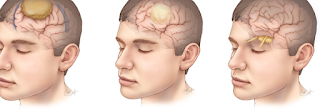Pediatric Brain Tumors: Techniques and Insights into How Neurosurgeons Treat Such Life-Threatening Conditions in Children
Pediatric brain tumors are infrequent but serious pathologies, management of which is strictly specialized. Neurosurgeons play a very important role in the diagnosis and treatment of tumors in children. Their work combines advanced technology, thorough assessments, and a compassionate understanding of their young patients' needs.
Neurosurgeons always work in a team when dealing with such complex cases to ensure that the treatment is comprehensive. They employ imaging techniques to identify the exact site of the tumor and the approach that will be most appropriate for a surgical intervention. This is not only done to remove the tumor but also to protect the surrounding brain tissue, which is vital for the overall development and quality of life of the child.
This will go a long way in comforting and making things clearer for the parents in their quest for answers and treatment. The expertise and commitment of neurosurgeons shall further help the children through this journey. Key Take-Homes Neurosurgeons have an important contribution in the management of brain tumors in children. Early diagnosis and suitable surgery are the cornerstones for a good outcome. A multidisciplinary approach is involved in the care of a young patient. Overview of Pediatric Brain Tumors
Brain tumors are complex and greatly varied in types and their effects. These tumors sometimes might affect different portions of the brain and, at later stages, manifest themselves through various signs and symptoms that may be serious enough to require immediate medical concern.
Classification and Types
Pediatric brain tumors could be categorized into two main classes: primary and secondary tumors. Primary tumors have their origin from brain tissue, while secondary tumors metastasize from other parts of the body.
Common types of primary tumors of the brain include:
- Astrocytomas: These are those tumors that rise from star-shaped brain cells. They may be low-grade or high-grade.
- Medulloblastomas: These are found in the cerebellum but often spread to other areas of the central nervous system.
- Ependymomas: These occur in the membrane lining of the ventricles and spinal canal.
Others include gliomas, craniopharyngiomas, and germinomas. Each type has its particular characteristics, treatment possibilities, and prognosis.
Epidemiology and Statistics
Pediatric brain tumors are the most common types of solid tumors in children. Brain tumors make up approximately 20% of all childhood cancers. The incidence is approximately 4 to 5 cases per 100,000 children.
Brain tumors can occur at any age but are most common between the ages of 5 and 10 years. Many times, the exact cause is not known even though genetic influence and exposure to radiation are some of the risk factors. Fortunately, because of early detection and proper treatments, the survival rate has been improving, and promising long-term outcomes for some types have been witnessed.
Symptoms
The symptoms of pediatric brain tumors depend on the size and location of the tumor; however, some common signs include:
- Headaches: These are typically worse in the morning or later in the day.
- Nausea and Vomiting: This is especially distressing if occurring frequently.
- Changes in Vision or Hearing : A patient can experience blurred vision or ringing in the ears .
Seizures: New seizures are a symptom of brain tumor.
Other symptoms may include problems with balance, unusual behavior, or developmental delays. Early diagnosis often plays an important role in effectively treating this type of tumor.
Diagnostic and Surgical Interventions
Neurosurgeons use various diagnostic and therapeutic modalities for brain tumors, including advanced imaging, biopsies, surgery, and close postoperative follow-up. Each step is crucial for guiding the best therapeutic option.
Imaging Techniques
The imaging techniques are very helpful in the detection and evaluation of brain tumors. Among them, MRI and CT scans can be utilized.
With MRI, detailed pictures are obtained about the brain structures, which can help the doctors to know the size and the exact site of the tumor. CT scans are faster and will be able to show the bleeding or swelling in the brain. The neurosurgeon decides on the course of action based on these images. Neurosurgeons may use functional MRI and PET-scan to know the functioning and activity of the brain.
Biopsy and Histological Examination
Biopsy means the sample of tumor tissue is taken for further investigation. This step is very important in determining a correct diagnosis.
The tissue sample will enable the pathologists to determine the type of tumor and the grade it falls under.
Not all types of tumors will require similar treatment.
Following biopsy, histological examination determines whether the tumor is benign or malignant. The nature of the tumor provides information about surgical intervention and further treatment.
Surgical Technique and Considerations
Neurosurgeons use many different kinds of procedures, depending on tumor type and location in cases where surgery is the best option.
Craniotomy is a common procedure used when an intracranial tumor needs a portion of the skull to be removed to access the tumor area.
Endoscopic techniques refer to small cameras and instruments used to remove tumors through smaller openings.
Surgeons consider factors like the age and health of the child. They put in the needed meticulous effort to avoid risks, including the injury of surroundings healthy tissues. Planning is central in the effective removal of the tumor.
Postoperative Care and Monitoring
After surgery, recovery monitoring must be duly undertaken. Pediatric patients may need to stay in the hospital for observations.
Neurosurgeons monitor for signs of post-operative complication such as infection or bleeding.
Follow-up imaging may be arranged to confirm the completeness of tumor removal.
Where necessary, rehabilitation may involve physical, speech, or occupation therapy. Such postoperative services are important in maximizing quality of life and providing ongoing health care support.

